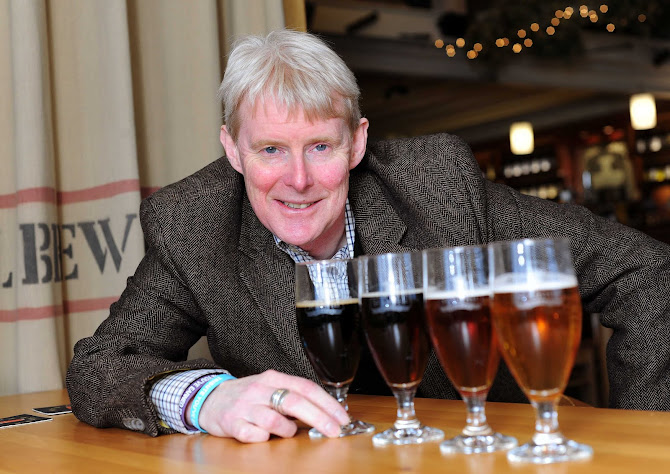 |
| Enjoying a Stein |
If you have experienced UK Beer Festivals then this is nothing like that at all. The main purpose seems to be to drink lots and have a great time, its not about trying lots of different beers, its about drinking a lot of one beer and socialising. That's not to say its just about getting drunk, as the festival offers so much more than just drinking.
If you are part of one of the major brewers tents there is the chance to drink steins of beer and enjoy the merriment on show. Live music, a mix of traditional German oompah and covers of classic rock and pop music, it makes for an entertaining eclectic mix. Our tent was the Hofbrau-Festzelt, one of the largest tents taking almost 6,900 festival goers, it takes three months alone to erect! However outside of the tents there is a huge funfair and playground aimed at adults and just about every type of fast food offering available.
Being in Munich then traditional dress is almost obligatory, men in lederhosen and ladies in Bavarian costume are everywhere, I'd say at least 60% of the people attending were dressed this way. Plus around the city you will see people dressed likewise. Its not something you would feel comfortable wearing in Plymouth city centre, but when in Rome as they say, I rather wish we'd known in advance so we too could have become part of the fabric of the festival by wearing the traditional dress.
It was also true that the Germans are far more accepting of fun, people were stood on benches, stools and tables dancing, singing and swaying to the music, can you imagine that happening at a UK festival!
The beer in Munich was great, strong yes, but easy to drink. An evening around the bars show cased a number of beers including Weiss beers. Lovely drinks, lots of yeast which has an adverse effect on the British constitution.
So would I recommend a visit to Munich and Oktoberfest? Yes if you are into beer its one of the bucket list things to do and its a great experience. Its different from a UK beer festival, but go with an open mind and be prepared to be part of the fun. As for Munich then great city, well worth a visit, Oktoberfest or not. PROST









